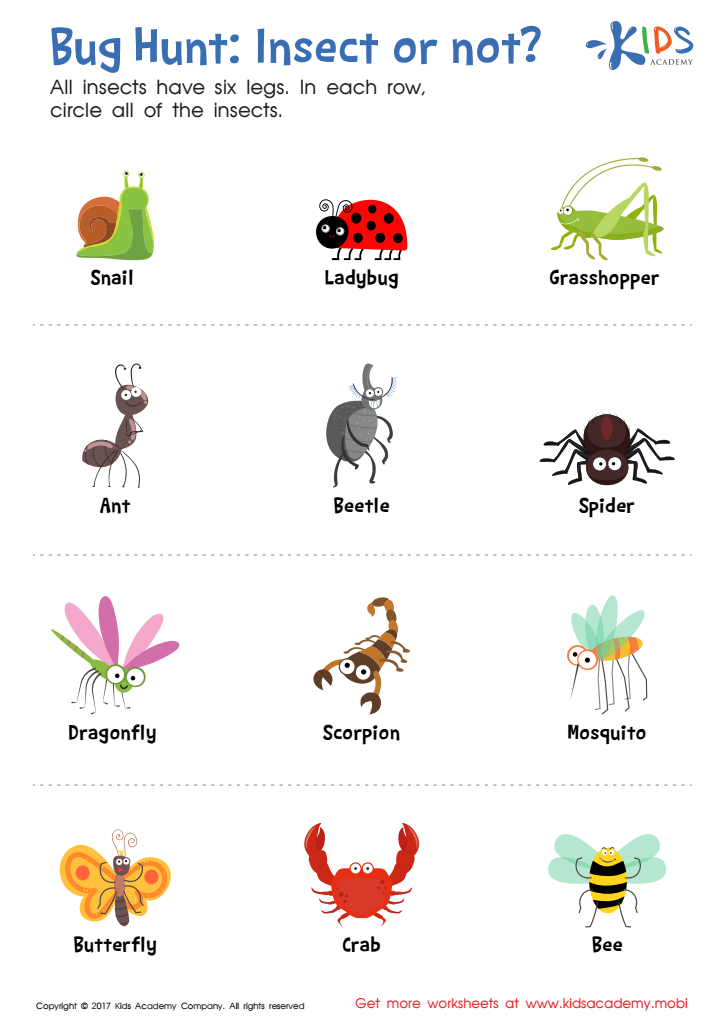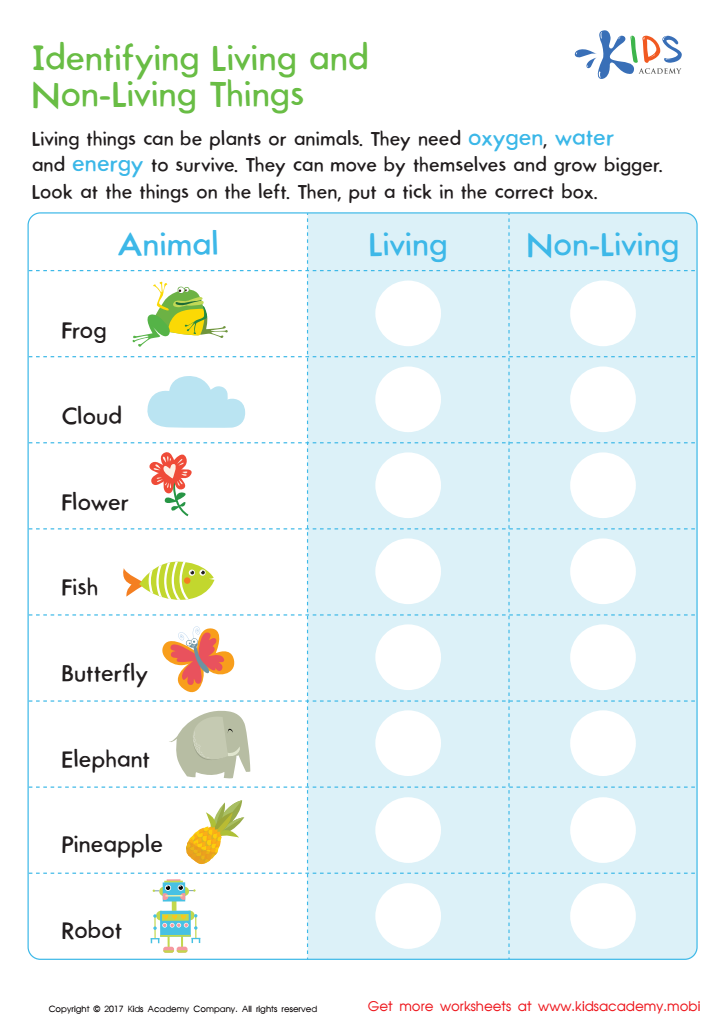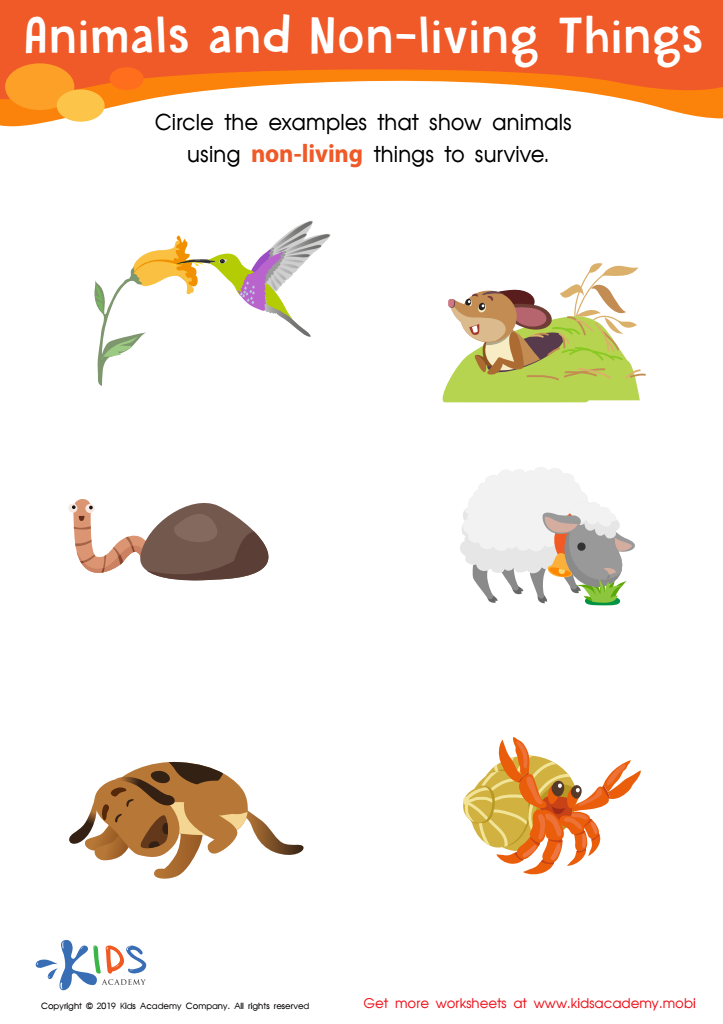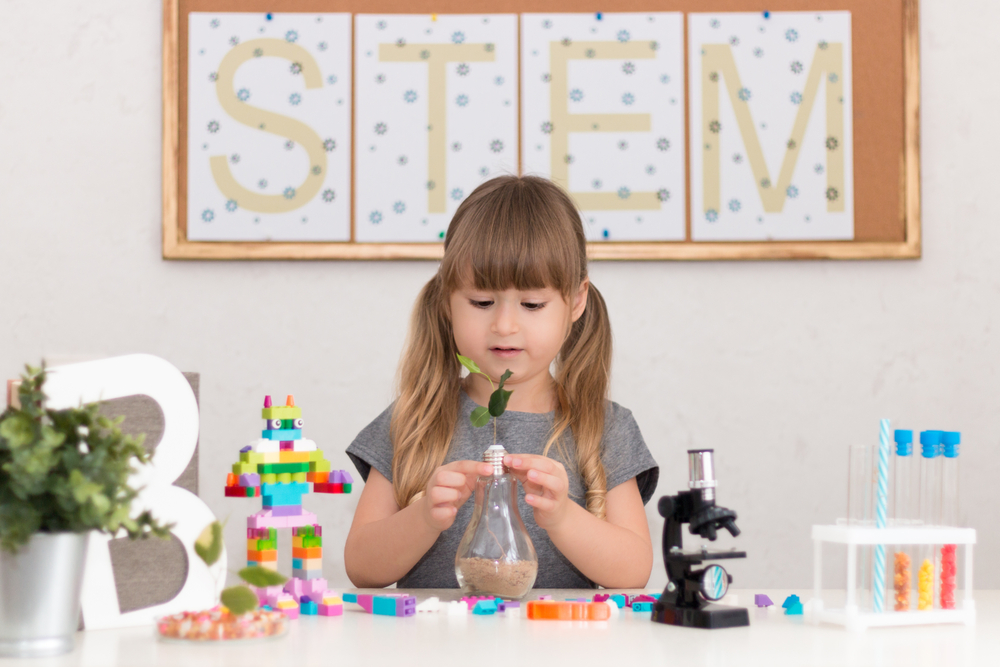Categorization skills Normal Animals Worksheets for Ages 4-6
3 filtered results
-
From - To
Explore our engaging "Categorization Skills Normal Animals Worksheets" designed specifically for children aged 4-6! These interactive worksheets help young learners identify and categorize various animals, fostering essential cognitive skills. Activities include sorting animals by type, size, and habitat, making learning fun and effective. As children work through these thoughtfully crafted exercises, they enhance their understanding of the natural world while developing critical thinking and classification abilities. Ideal for parents and educators, our worksheets provide a perfect way to introduce children to animals while encouraging vital early learning skills. Download now and spark your child's curiosity about the animal kingdom!




Identifying Living or Non–living Worksheet


Animals and Non-Living Things Worksheet
Categorization skills are vital for children aged 4-6 as they form the foundation for critical thinking and problem-solving abilities. Mastering categorization helps children learn to group items based on shared characteristics, a skill that extends beyond mere classification. Understanding concepts such as "normal animals" means they can identify and differentiate between various species and their traits, fostering a deeper connection to the natural world.
For parents and teachers, encouraging categorization skills through fun activities and discussions about animals increases children’s engagement and retains their interest in learning. This process nurtures cognitive development, allowing young learners to make meaningful connections and draw conclusions. Additionally, it enhances vocabulary and language skills, as children learn new words related to different animal types and their environments.
By fostering categorization skills, adults aid in building a child’s ability to categorize informationU, which is essential for academic success in reading and math later on. Moreover, these skills promote social learning and empathy as children discuss and explore the world around them. Overall, investing time in developing categorization skills in young learners lays a strong groundwork for lifelong learning and curiosity.
 Assign to My Students
Assign to My Students















